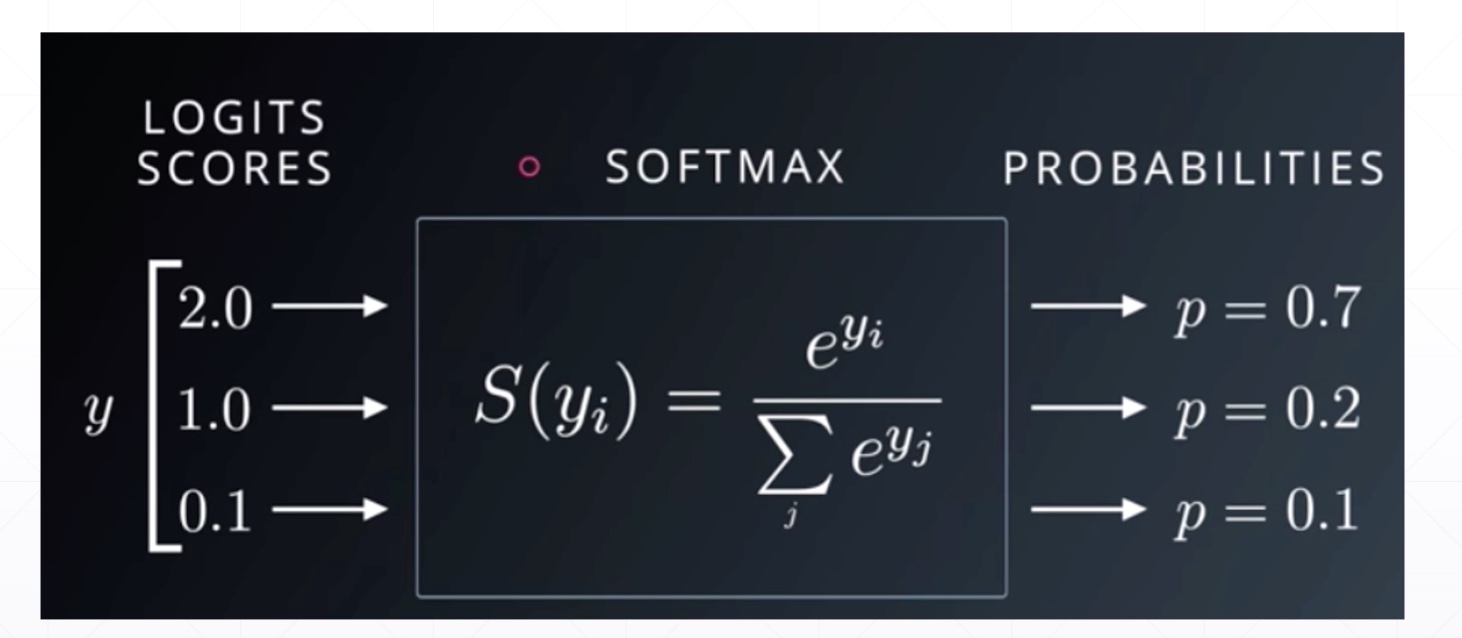Typical Loss
Mean Squared Error
- Cross Entropy Loss
- binary
- multi-class
- +softmax
MSE
\(loss = \sum[y-(xw+b)]^2\)
\(L_{2-norm} = ||y-(xw+b)||_2\)
\(loss = norm(y-(xw+b))^2\)
Derivative
\(loss = \sum[y-f_\theta(x)]^2\)
\(\frac{\nabla\text{loss}}{\nabla{\theta}}=2\sum{[y-f_\theta(x)]}*\frac{\nabla{f_\theta{(x)}}}{\nabla{\theta}}\)
MSE Gradient
import tensorflow as tfx = tf.random.normal([2, 4])
w = tf.random.normal([4, 3])
b = tf.zeros([3])
y = tf.constant([2, 0])
with tf.GradientTape() as tape:
tape.watch([w, b])
prob = tf.nn.softmax(x @ w + b, axis=1)
loss = tf.reduce_mean(tf.losses.MSE(tf.one_hot(y, depth=3), prob))
grads = tape.gradient(loss, [w, b])
grads[0]<tf.Tensor: id=92, shape=(4, 3), dtype=float32, numpy=
array([[ 0.01156707, -0.00927749, -0.00228957],
[ 0.03556816, -0.03894382, 0.00337564],
[-0.02537526, 0.01924876, 0.00612648],
[-0.0074787 , 0.00161515, 0.00586352]], dtype=float32)>grads[1]<tf.Tensor: id=90, shape=(3,), dtype=float32, numpy=array([-0.01552947, 0.01993286, -0.00440337], dtype=float32)>Softmax
soft version of max
大的越来越大,小的越来越小、越密集

Derivative
\[ p_i = \frac{e^{a_i}}{\sum_{k=1}^Ne^{a_k}} \]
- i=j
\[ \frac{\partial{p_i}}{\partial{a_j}}=\frac{\partial{\frac{e^{a_i}}{\sum_{k=1}^Ne^{a_k}}}}{{\partial{a_j}}} = p_i(1-p_j) \]
- \(i\neq{j}\)
\[ \frac{\partial{p_i}}{\partial{a_j}}=\frac{\partial{\frac{e^{a_i}}{\sum_{k=1}^Ne^{a_k}}}}{{\partial{a_j}}} = -p_j*p_i \]
x = tf.random.normal([2, 4])
w = tf.random.normal([4, 3])
b = tf.zeros([3])
y = tf.constant([2, 0])
with tf.GradientTape() as tape:
tape.watch([w, b])
logits =x @ w + b
loss = tf.reduce_mean(
tf.losses.categorical_crossentropy(tf.one_hot(y, depth=3),
logits,
from_logits=True))
grads = tape.gradient(loss, [w, b])
grads[0]<tf.Tensor: id=226, shape=(4, 3), dtype=float32, numpy=
array([[-0.38076094, 0.33844548, 0.04231545],
[-1.0262716 , -0.6730384 , 1.69931 ],
[ 0.20613424, -0.50421923, 0.298085 ],
[ 0.5800004 , -0.22329211, -0.35670823]], dtype=float32)>grads[1]<tf.Tensor: id=224, shape=(3,), dtype=float32, numpy=array([-0.3719653 , 0.53269935, -0.16073406], dtype=float32)>